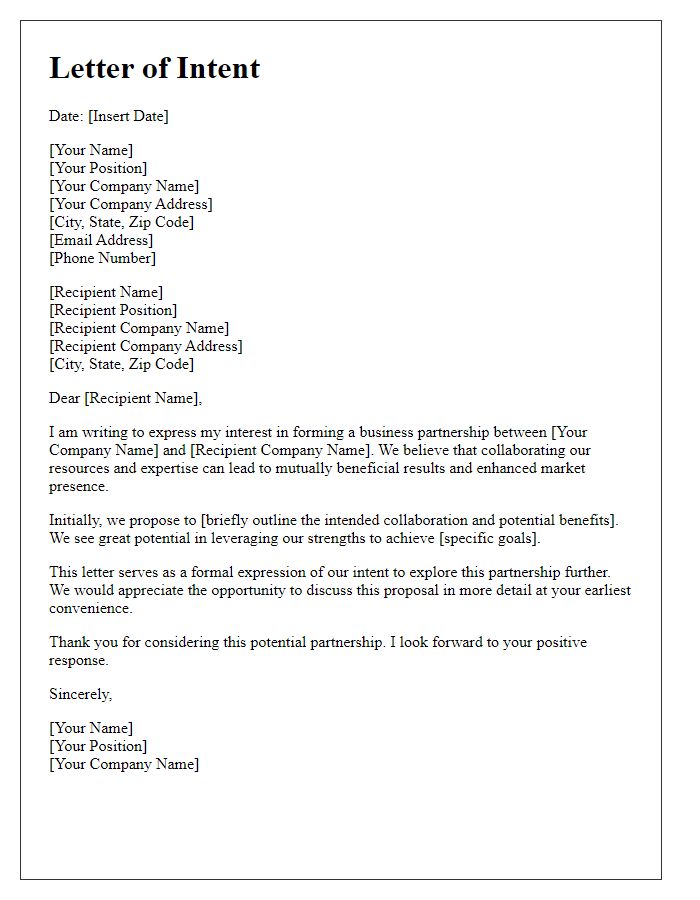Are you ready to take a significant step in your professional journey? A letter of intent can be a powerful tool to express your intentions clearly and effectively, whether you're applying for a job, seeking admission to a program, or proposing a partnership. Crafting a compelling letter of intent doesn't have to be daunting; it simply requires a clear structure and a heartfelt message. Join us as we explore some essential tips and templates to help you draft the perfect letter of intent!

Formal Salutation
The letter of intent serves as a formal declaration of the intentions of the parties involved, often in business or academic contexts. Key components include the organization's name (e.g., "XYZ Corporation"), specific proposal details (such as a partnership or grant application), and acknowledgment of terms (like the duration of the agreement). It is customary to address the recipient respectfully, using a formal salutation such as "Dear [Recipient's Name and Title]" to establish a professional tone. Following this, the body of the letter outlines the purpose, objectives, and expectations regarding the proposed arrangement, emphasizing mutual benefits and responsibilities.
Clear Statement of Intent
A clear statement of intent outlines the purpose and goals of a proposed project or agreement. For example, an organization may express its intention to collaborate on a community development initiative aimed at improving literacy rates among children aged 6 to 12 in San Diego, California. In this context, the letter might specify the intended outcomes, such as increasing reading proficiency by 25% within two years, through structured programs and partnerships with local schools and libraries. Key stakeholders, including community leaders and educational authorities, would be mentioned to highlight the collaborative nature of the initiative, reinforcing the commitment to fostering educational advancements within the targeted demographic.
Relevant Background Information
The letter of intent serves as a formal document expressing interest in entering into a specific agreement or partnership, often utilized in business negotiations, real estate transactions, or academic applications. Key components such as the purpose of the intent, timelines, and areas of interest should be clearly articulated. Inclusion of relevant background information, including prior experiences or qualifications, enhances credibility. For example, details about previous projects, educational achievements, or professional affiliations can demonstrate capability and intent. Stating specific goals and desired outcomes allows for alignment between parties, facilitating a smoother transition into a formal agreement or collaboration.
Detailed Objectives and Goals
A letter of intent often highlights specific objectives and goals intended to guide the partnership or project. In the context of a university research collaboration, objectives may include enhancing scientific discoveries, increasing funding opportunities, and promoting interdisciplinary work between departments such as Biology, Chemistry, and Environmental Science. Goals could specify achieving at least three joint publications within the first year, securing grant funding exceeding $500,000 within two years, and establishing an annual symposium to showcase research findings. Each objective and goal should align with broader institutional aims, such as improving community engagement and fostering innovation in sustainable practices.
Contact Information and Closing
Contact information serves as the essential heading of a letter of intent, typically including the sender's full name, address, phone number, and email address, prominently displayed at the top. Following the sender's information, the recipient's details, including their name, title, organization, and address, are clearly specified to ensure proper delivery and context. The closing section of the letter contains a formal sign-off, such as "Sincerely" or "Best regards," followed by the sender's signature (if sending a hard copy) and their typed name along with any relevant titles or positions, providing an authoritative conclusion to the correspondence.













Comments